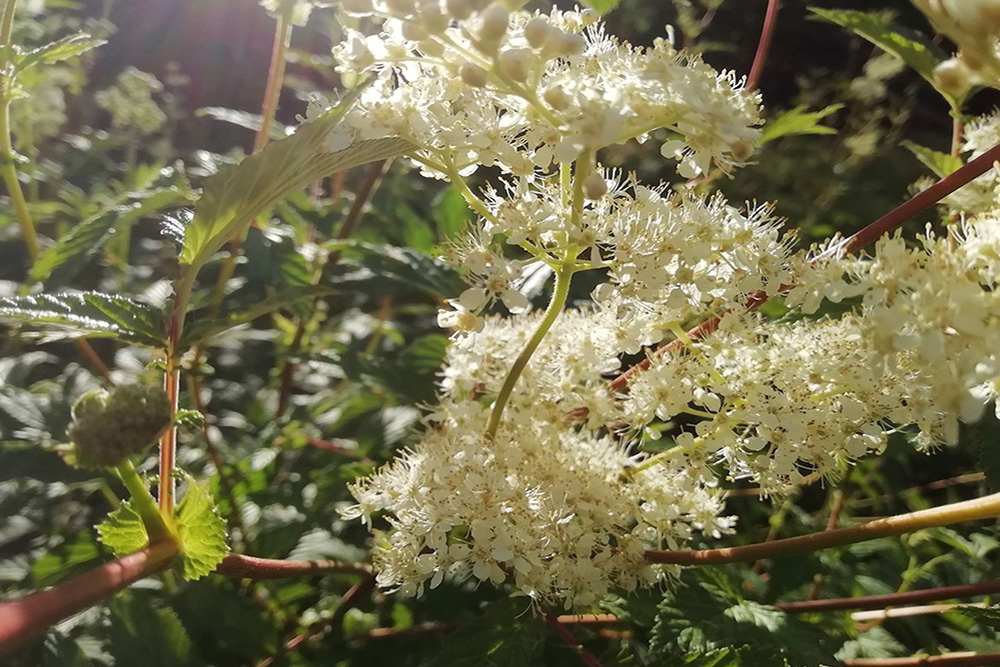Do I dare
Disturb the universe? – T.S. Eliot
There’s a little known Canadian film called I’ve Heard the Mermaids Singing. I watched it many years ago. A friend, who was a Buddhist, said “it’s a nice film” in an emphatic way which caught my attention. I’ve watched it perhaps eight times since, and I’m struck with it again.
The title is a line from T.S. Eliot. It’s the central theme of the film but subtly presented. There’s a black and white dream scene where Polly, the heroine, is beside the sea. She’s hearing mermaids, expressed musically with surreal song and hypnotic drums. There’s also a Flower Duet soundtrack by Delibes, playing twice. Once in another fantasy scene, and when Polly is cooking dinner in her flat.
The three main characters, women, are symbolically the mermaids. Two of them are sexually involved and the third, Polly, watches with curiosity and surprise. She’s naive and inexperienced, with little experience of men, watches and photographs an embracing couple in a park trying to understand. Although poignant it’s comedy, not tragedy, and just as The Love Song of J. Alfred Prufrock speaks to everyone so does this film.
Polly endears herself to “the curator” working as a secretary in her gallery which used to be a church. Her name is Gabrielle, but for Polly she’s “the curator.” Gabrielle’s friend is Mary. The first is thus an angel, the second a well known mother. This is subtle symbolism again, a background you barely notice, against which other themes are expressed. It’s a critique of religion from a feminist viewpoint. The trinity are women, Polly a ghost. A female couple against society, as with the famous Thelma and Louise. But it’s fun and comical, not penetrating or serious. The story line validates Polly. She can’t spell, can barely type, but Gabrielle says “I like having you around.”
In addition to the character dimensions of the film, there are two philosophical themes. Polly is a Cinderella archetype which is partly why I like the film. She’s similar to the character in Working Girl portrayed by Melanie Griffith and in some respects like the janitor in Good Will Hunting – another favourite of mine. The gender dynamics are different but the idea essentially the same. Polly is ignored for her creativity, Will for his mathematical genius; both suffer menial social roles as we sympathise and identify with their predicament. It’s what happens in society. “The mass of men” said Thoreau “live lives of quiet desperation.”
Art has two dimensions. The first is evident with Gabrielle who obsesses about fame and recognition. The second is private, where we see Polly taking photographs for her own satisfaction. People ask the question is art one or the other, public or personal. Neither is wholly correct. Both can be understood in terms of a third position which Nietzsche recognised in terms of change and transformation. We either experience ourselves differently, or the world, possibly both, with an encounter which enhances meaning. Art is a form of knowing which is beneficial for both psyche and society.
In addition to the T.S. Eliot reference, the theme of photography is paramount. Polly’s hobby is taking pictures with a film camera, printing them in a darkroom at home. She makes a film, within the film, talking to us as she describes her life. “I’m pretty much a gal on the go” she says, taking menial jobs and talking in a room where her photographs are pinned on the wall. There’s a scene where Gabrielle – sophisticated but pretentious – asks Polly what she wants with her life. She has no idea whereas Gabrielle wants “universal respect”, never growing old; to make a painting which is so beautiful it lasts forever. Polly struggles, Gabrielle doesn’t, the art gallery paid for by parents. Polly tells us, in her film, her parents died when she was young.
Polly walking around with a camera is what I did in my early photography, finding artistic details. A park bench, library roof, wooden fence, trees growing in the snow. She cycles, I did too, exploring the local environment then consulting books. There was a sheen in the tones of black and white film photography I discovered in the library. I remember the thrill of it, and how it was different from painting. There weren’t many books in the local library but there was one about the Hungarian photographer Kertesz, Andreas Feininger, hobby advice guides, and a weekly Amateur Photographer magazine.
The ending of I’ve Heard the Mermaids Singing is in part a reconciliation between Polly and Gabrielle, after an argumentative scene. She visits Polly in her flat, accompanied with Mary, who says “have a look at this” when she sees Polly’s photographs on the wall. There’s a narrative twist to that moment, making it additionally poignant. Polly says “come here and I’ll show you some more” opening the door to her darkroom.
But we don’t see a darkroom. We see a beautiful sunlit forest. She looks into camera, smiles, then leads Gabrielle into her world. She’s in charge, triumphant, and for the first time we see a warm presence in her eyes. The credits arrive: and we hear the mermaids singing.
I write like this is a magazine column. With research, references, and a lot of time. If you like it, perhaps you would support me.

